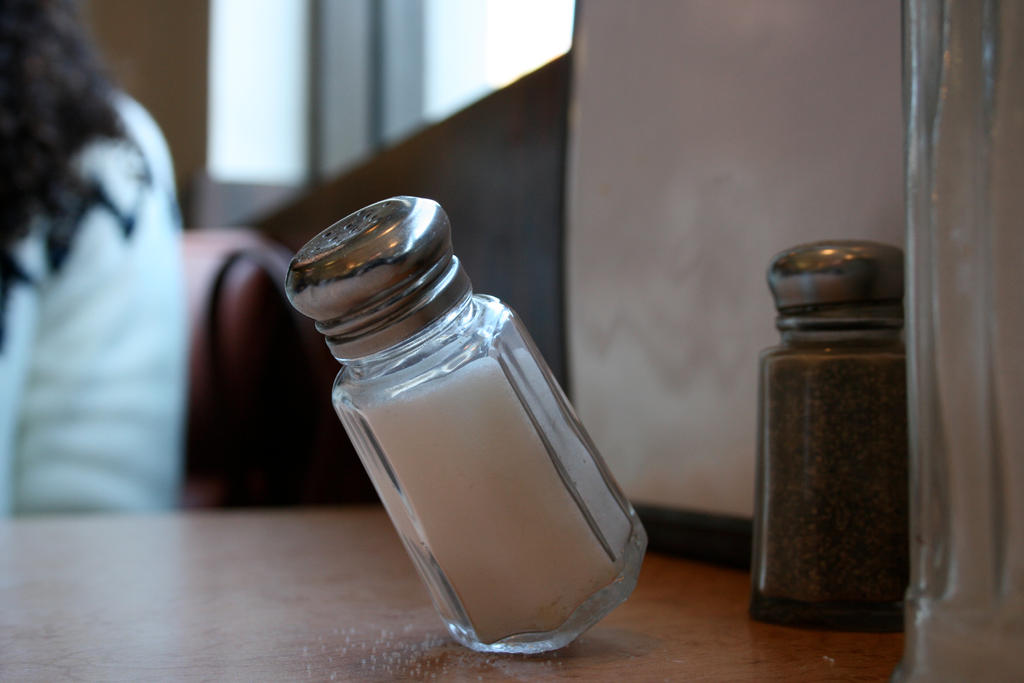Salt trick for enhancing flavor and preserving food has been a timeless solution for many households around the world. Whether you're a home cook, a professional chef, or simply someone who loves experimenting with flavors, understanding how salt works can significantly improve your culinary experience. This article dives deep into the science of salt, its benefits, and practical tips for using it effectively in your daily life.
From ancient civilizations to modern kitchens, salt has played an integral role in cooking and preserving food. Its ability to enhance flavor, preserve ingredients, and balance taste makes it an indispensable ingredient in every recipe. However, many people underestimate the power of salt and its proper application, leading to subpar results in their dishes.
In this article, we will explore the "salt trick for" various cooking techniques, from seasoning meat to preserving vegetables. By understanding the science behind salt and its applications, you can elevate your cooking skills and create meals that are both delicious and healthy. Let's get started!
Table of Contents
- What is Salt Trick for?
- History of Salt in Cooking
- The Science of Salt
Types of Salt
- Salt Trick for Seasoning
- Salt Trick for Preserving
Health Benefits of Using Salt
- Common Mistakes with Salt
- Tips for Using Salt Effectively
- Conclusion
What is Salt Trick for?
The term "salt trick for" refers to various techniques and methods that utilize salt to enhance the flavor, texture, and preservation of food. Whether you're cooking meat, baking bread, or preserving vegetables, salt plays a crucial role in bringing out the best in your ingredients. Understanding these tricks can help you become a better cook and create dishes that are both flavorful and nutritious.
History of Salt in Cooking
Salt has been used for thousands of years as a seasoning and preservative. Ancient civilizations, such as the Egyptians and Romans, relied on salt to preserve food during long journeys and harsh climates. In fact, the word "salary" is derived from the Latin word "salarium," which refers to the payment of Roman soldiers in the form of salt.
Today, salt remains one of the most essential ingredients in cooking. Its ability to enhance flavor, balance taste, and preserve food makes it indispensable in kitchens worldwide. From table salt to sea salt, there are various types of salt available, each with its own unique properties and uses.
The Science of Salt
Salt, or sodium chloride, is a compound that enhances flavor by altering the perception of taste. When added to food, salt reduces bitterness and enhances sweetness, making dishes more palatable. It also helps in preserving food by inhibiting the growth of bacteria and microorganisms.
According to a study published in the Journal of Food Science, salt enhances the umami flavor in food by amplifying the perception of glutamates. This makes dishes taste richer and more satisfying, which is why salt is often referred to as the "flavor enhancer."
Types of Salt
There are several types of salt available, each with its own unique properties and uses. Below are some of the most common types:
- Table Salt: Fine-grained salt commonly used in everyday cooking.
- Kosher Salt: Coarse-grained salt often used in meat preparation.
- Sea Salt: Salt obtained from evaporating seawater, known for its mineral-rich flavor.
- Himalayan Pink Salt: Salt mined from the Himalayan mountains, known for its pink hue and mineral content.
Salt Trick for Seasoning
Seasoning is one of the most important aspects of cooking, and salt plays a critical role in this process. Here are some practical tips for using salt to season your food:
- Season meat generously before cooking to enhance its flavor.
- Use kosher salt for larger cuts of meat, as it adheres better and distributes flavor evenly.
- Experiment with different types of salt to find the one that suits your taste preferences.
Salt Trick for Preserving
Salt has been used for centuries as a preservative, and its effectiveness is still unmatched today. Here are some ways you can use salt to preserve food:
- Make pickles by soaking vegetables in a saltwater brine solution.
- Use salt to cure meats, such as bacon or ham, for long-term preservation.
- Store herbs in salt to keep them fresh for longer periods.
Health Benefits of Using Salt
While excessive salt consumption can be harmful, moderate use of salt has several health benefits. Below are some of the key benefits:
- Salt helps regulate blood pressure and maintain fluid balance in the body.
- It supports nerve function and muscle contraction, essential for overall health.
- Mineral-rich salts, such as Himalayan pink salt, provide essential trace elements for the body.
Common Mistakes with Salt
Despite its importance, many people make mistakes when using salt in their cooking. Below are some common errors to avoid:
- Using too much salt, which can overpower the natural flavors of the ingredients.
- Adding salt too late in the cooking process, which can lead to uneven seasoning.
- Using the wrong type of salt for the dish, which can affect the taste and texture.
Tips for Using Salt Effectively
To get the most out of salt in your cooking, consider the following tips:
- Taste your food as you cook and adjust the salt accordingly.
- Experiment with different types of salt to find the one that complements your dish.
- Use salt in moderation to maintain a healthy balance in your diet.
Conclusion
In conclusion, the "salt trick for" various cooking techniques can significantly enhance the flavor, texture, and preservation of your food. By understanding the science behind salt and its applications, you can become a better cook and create dishes that are both delicious and nutritious. Remember to use salt in moderation and experiment with different types to find the one that suits your taste preferences.
We encourage you to try out these salt tricks in your own kitchen and share your experiences with us in the comments below. Don't forget to subscribe to our newsletter for more cooking tips and tricks!


